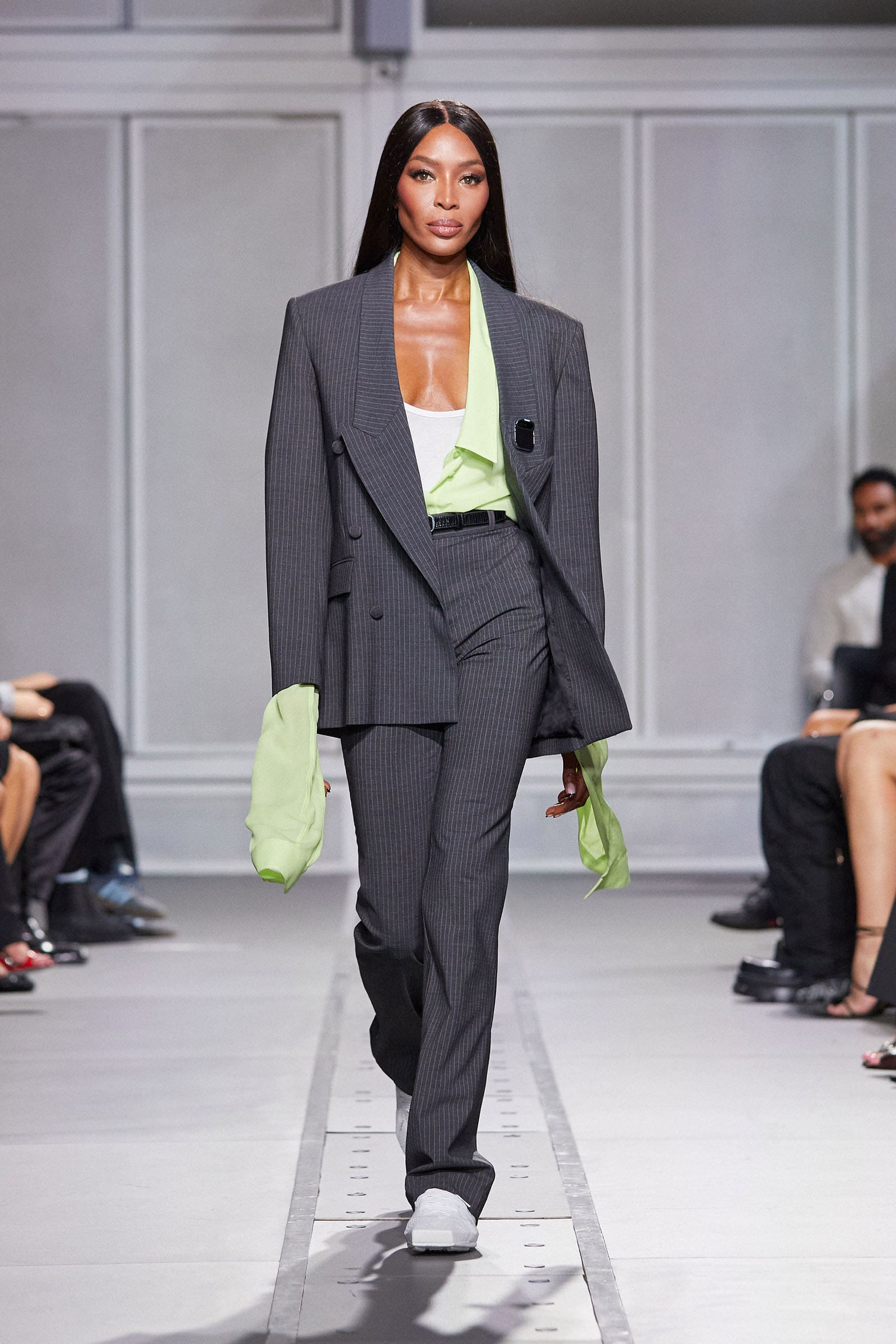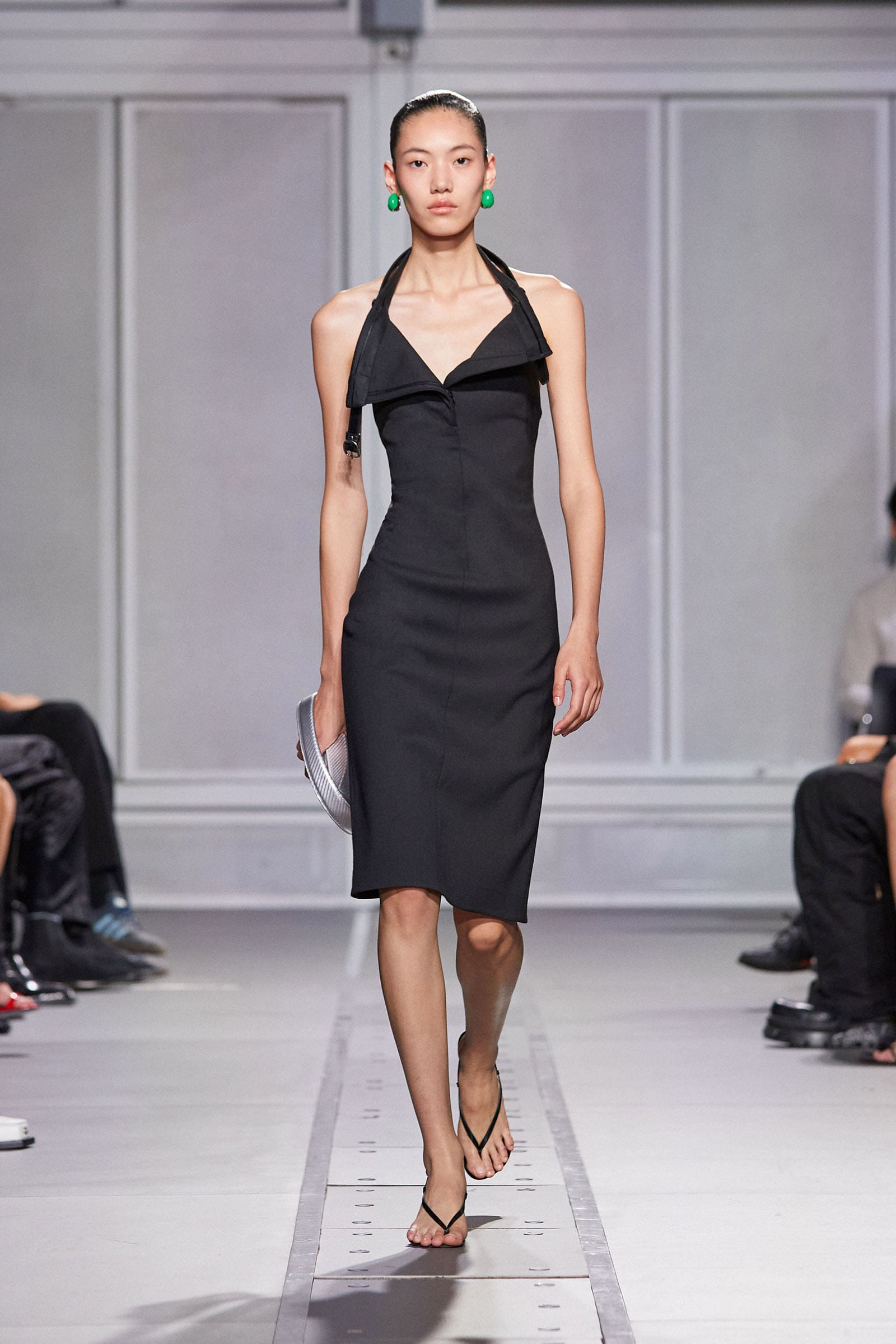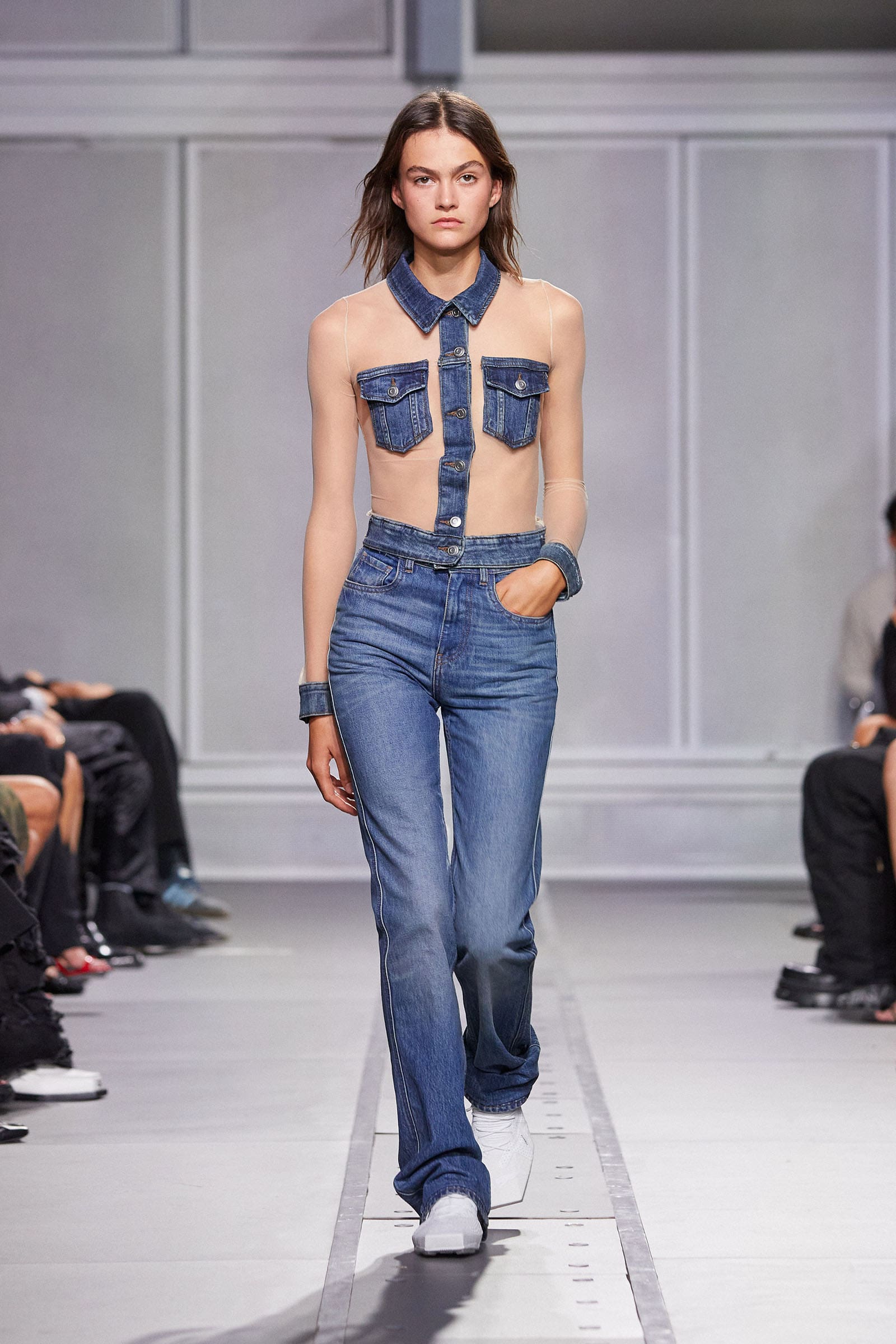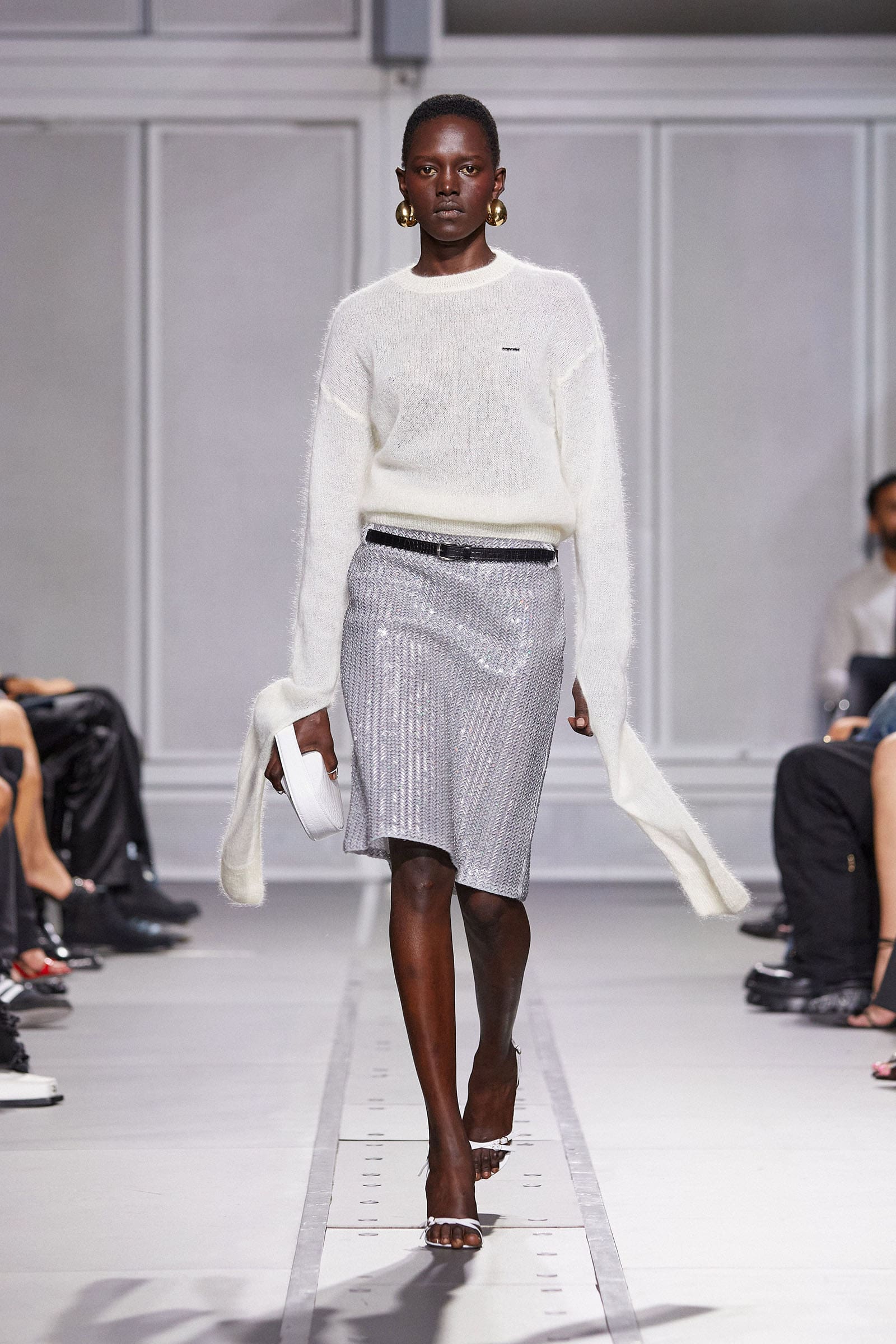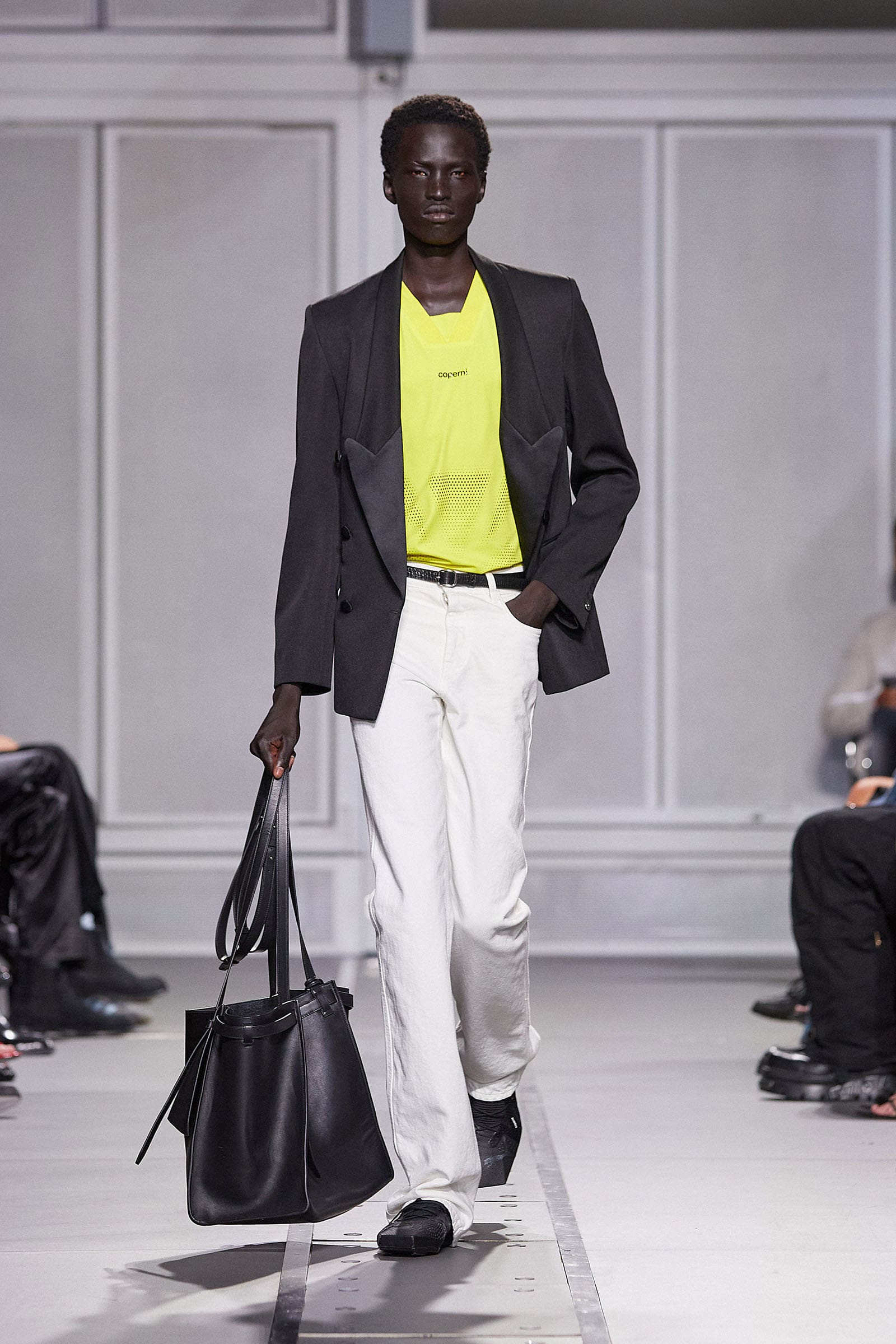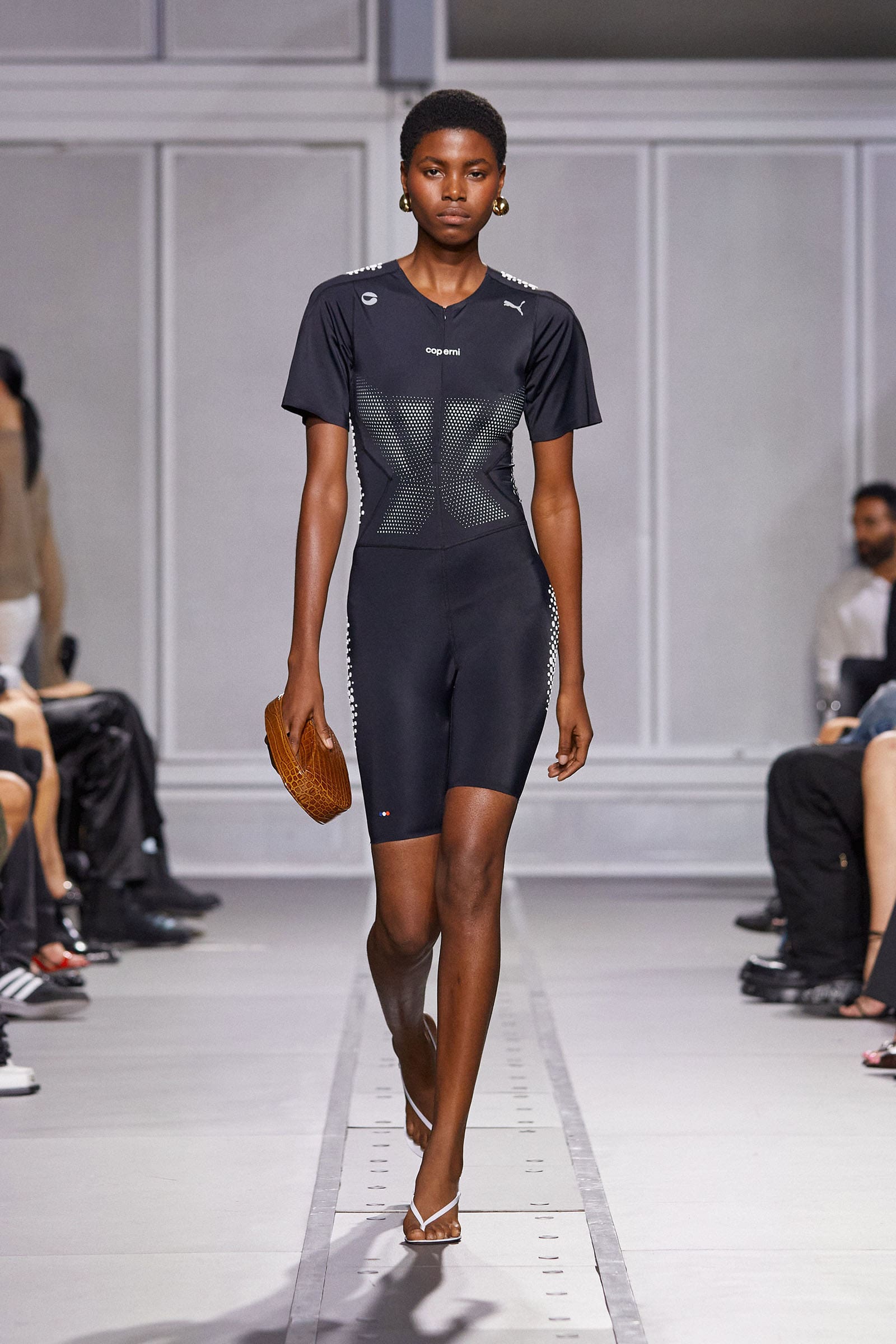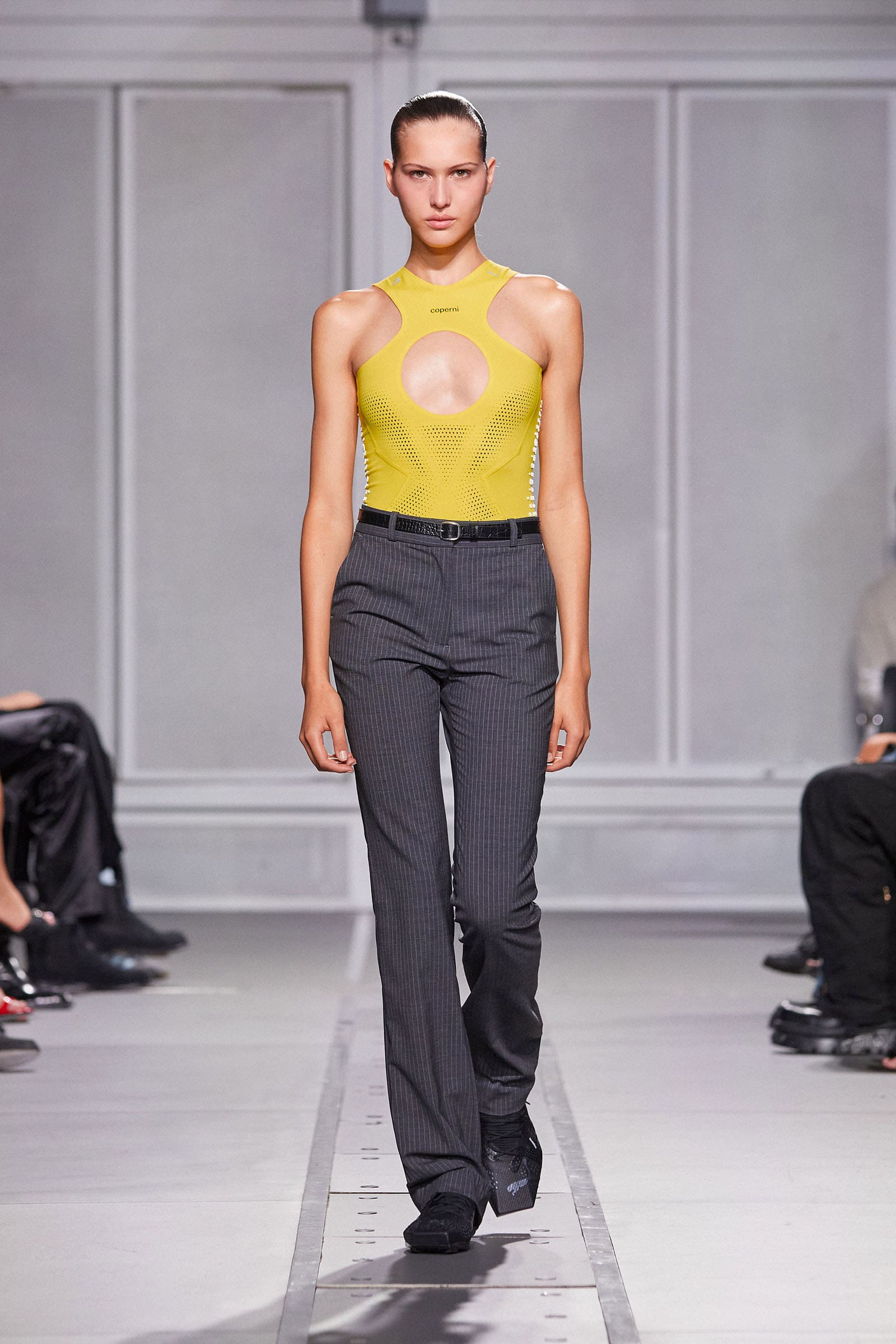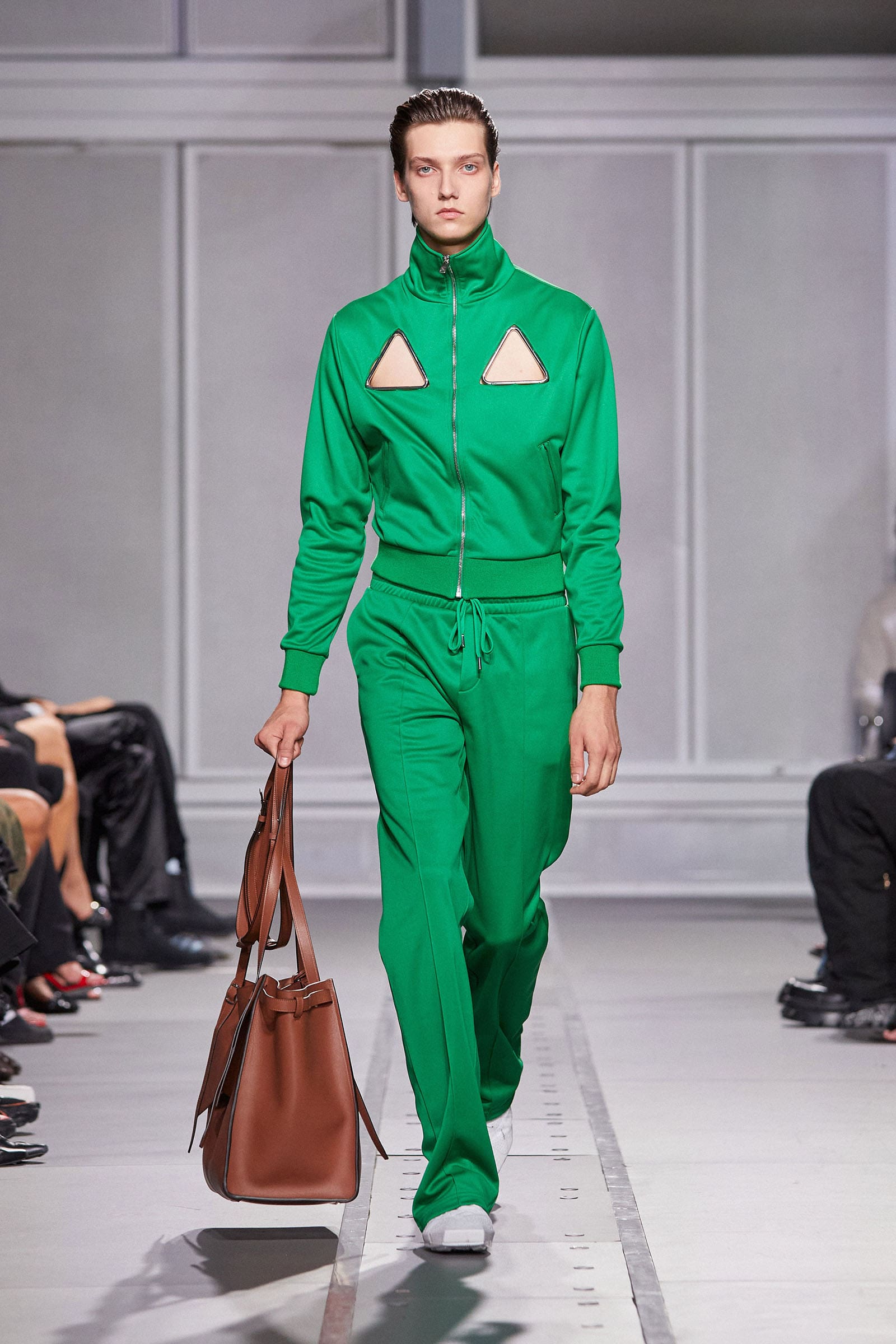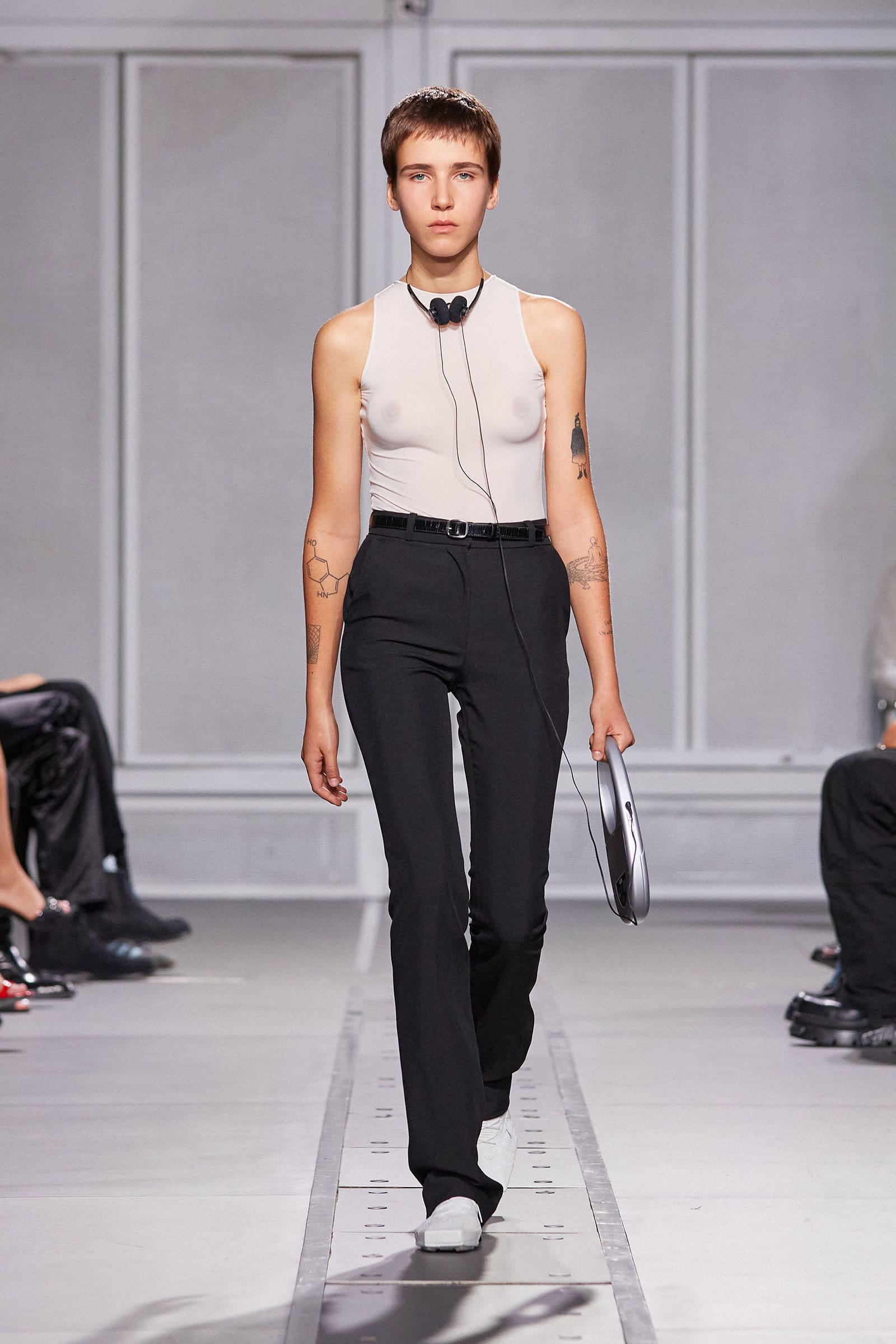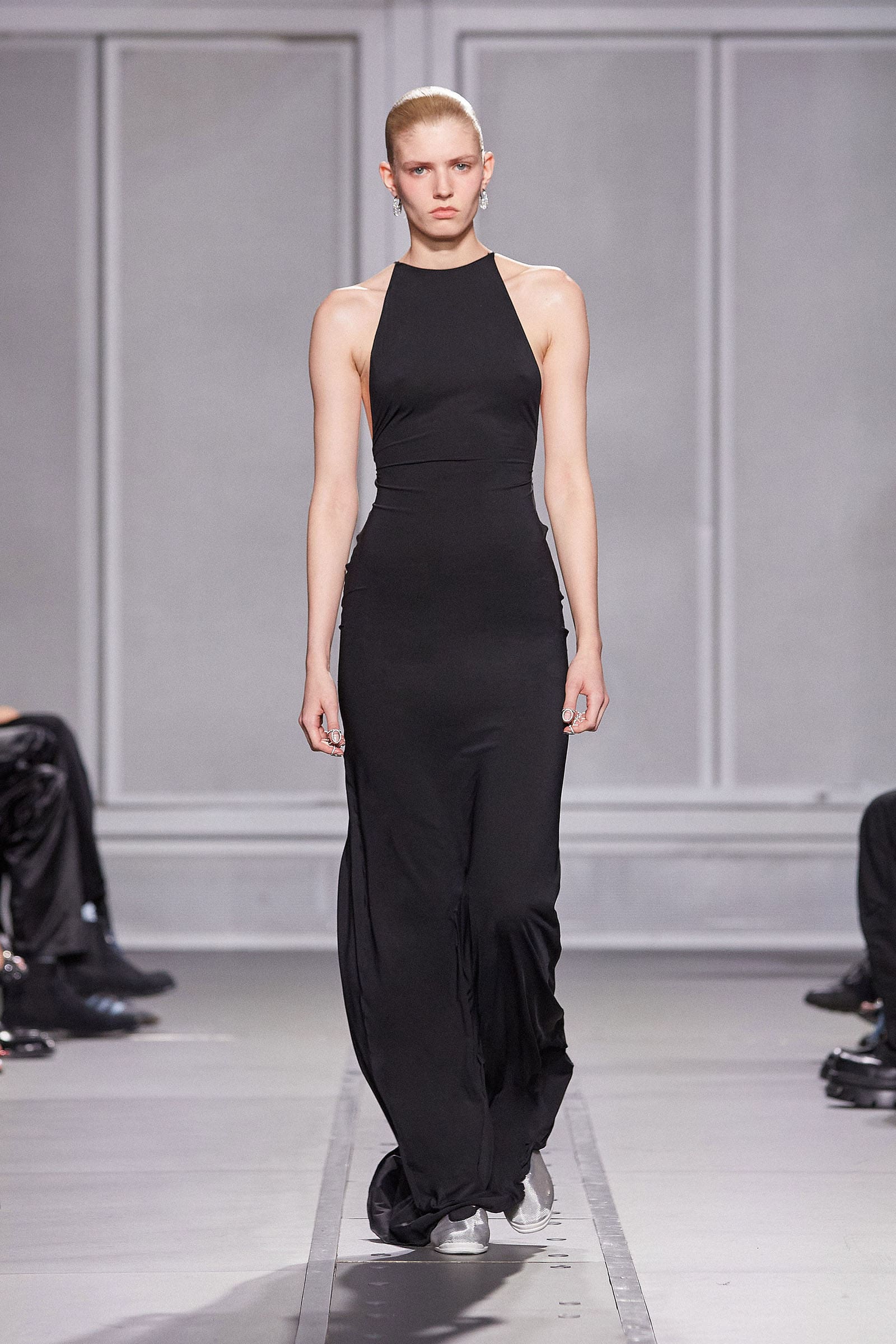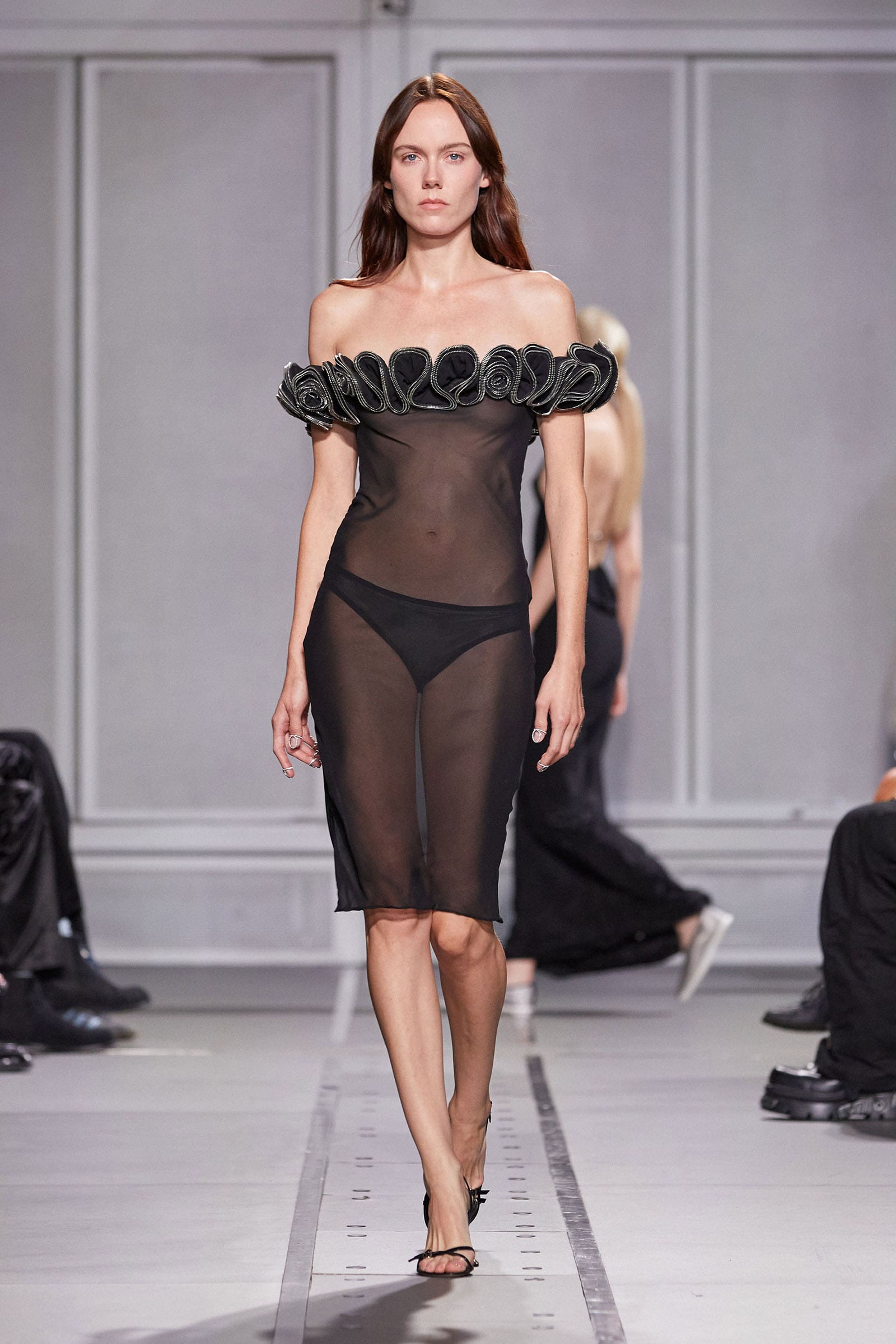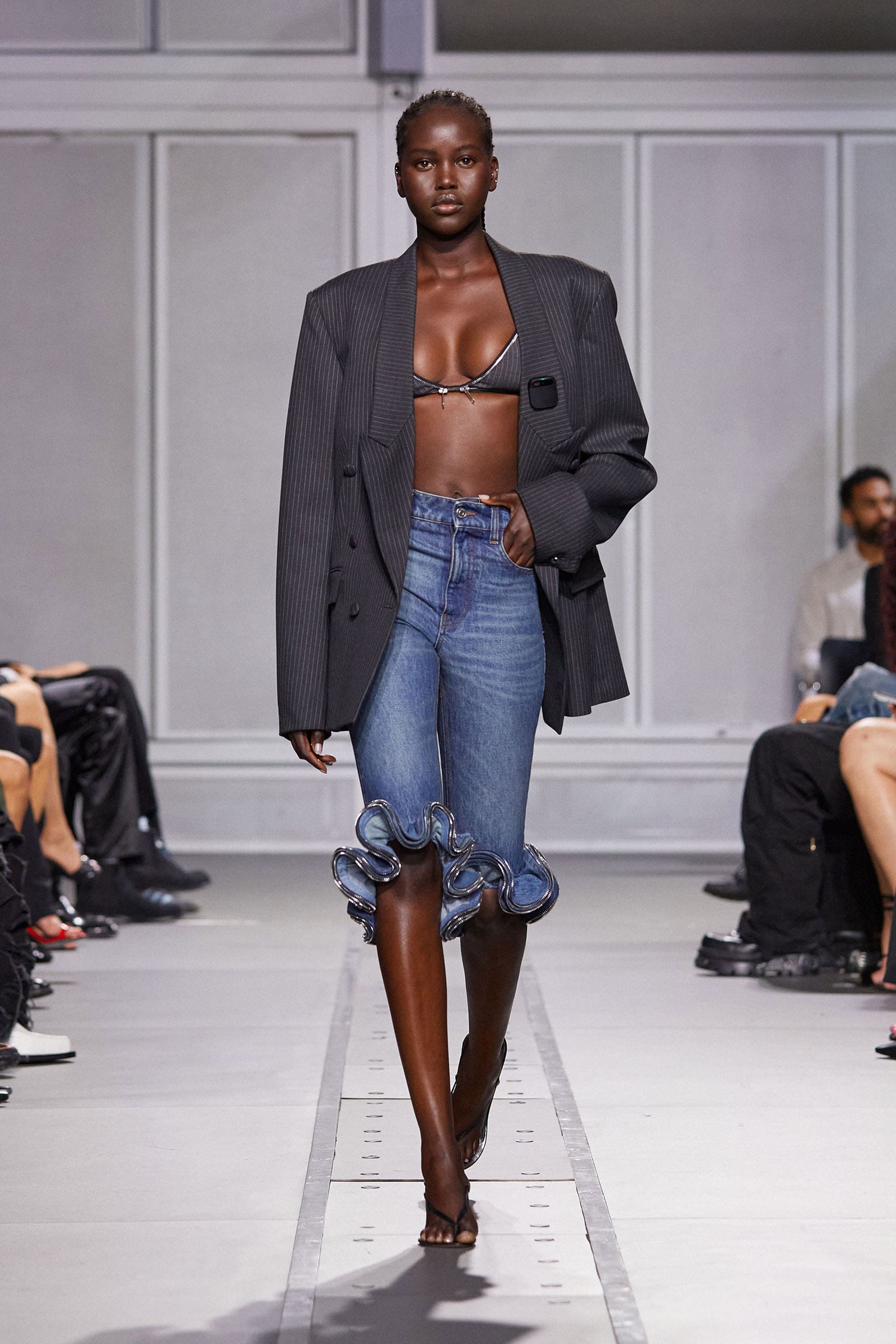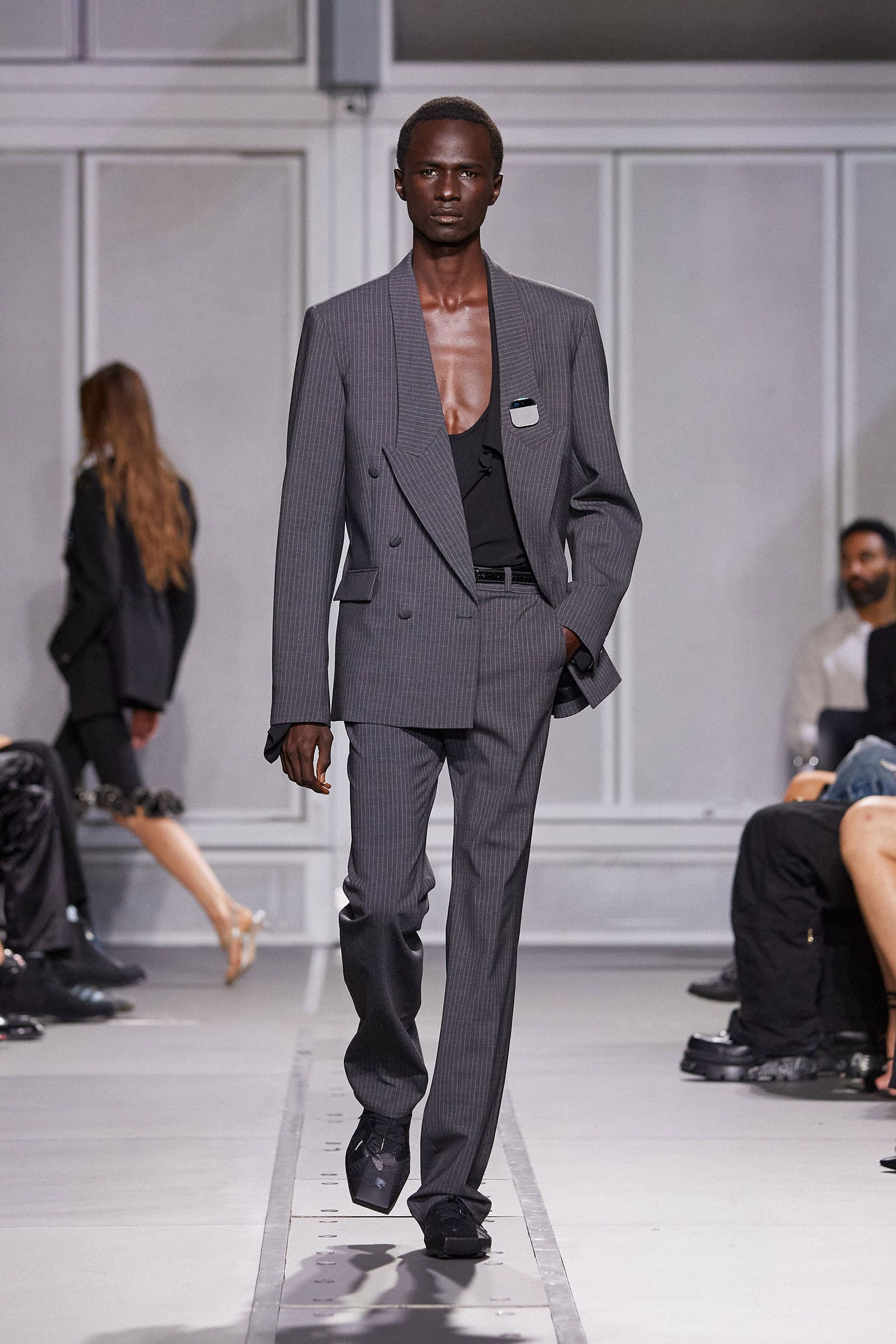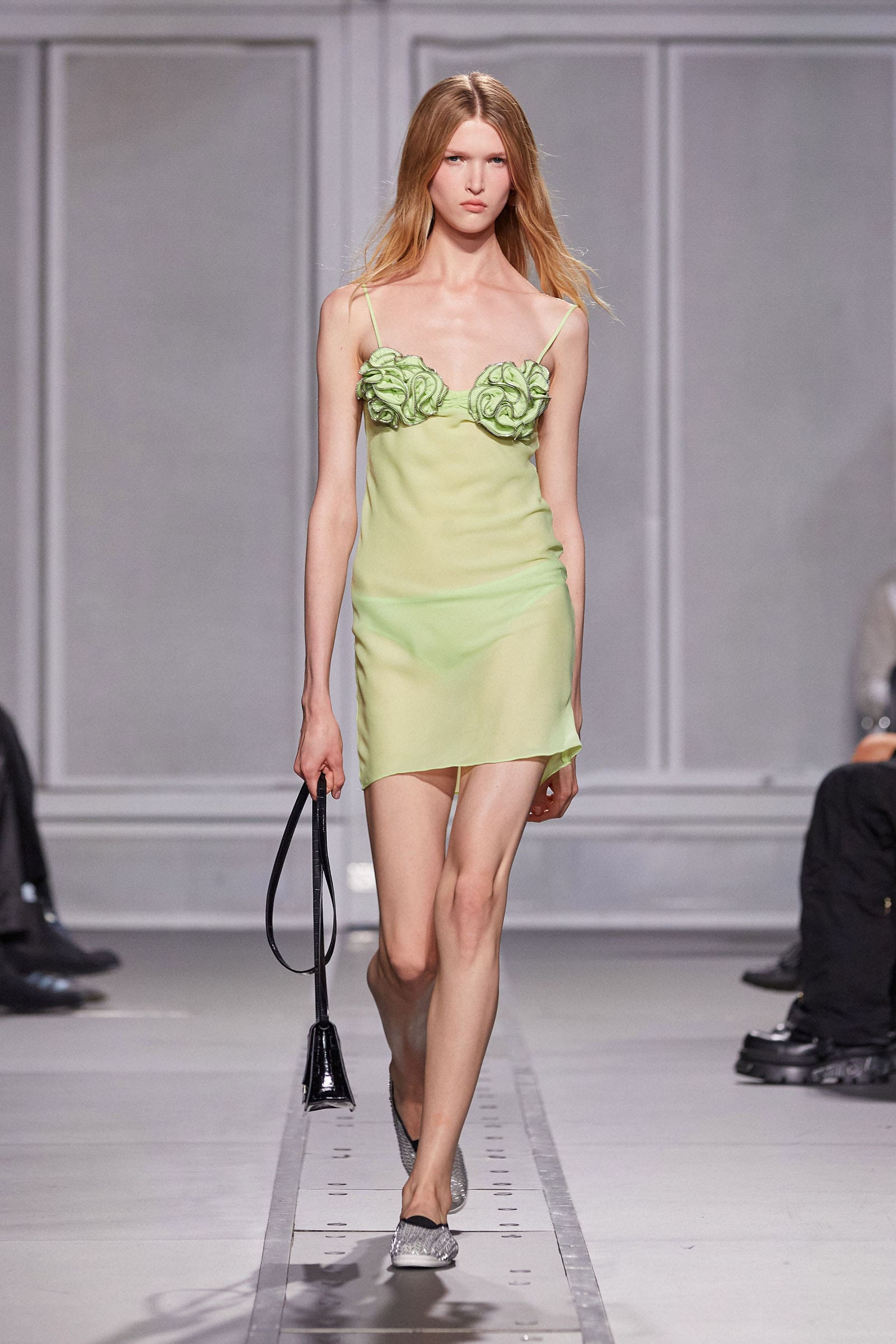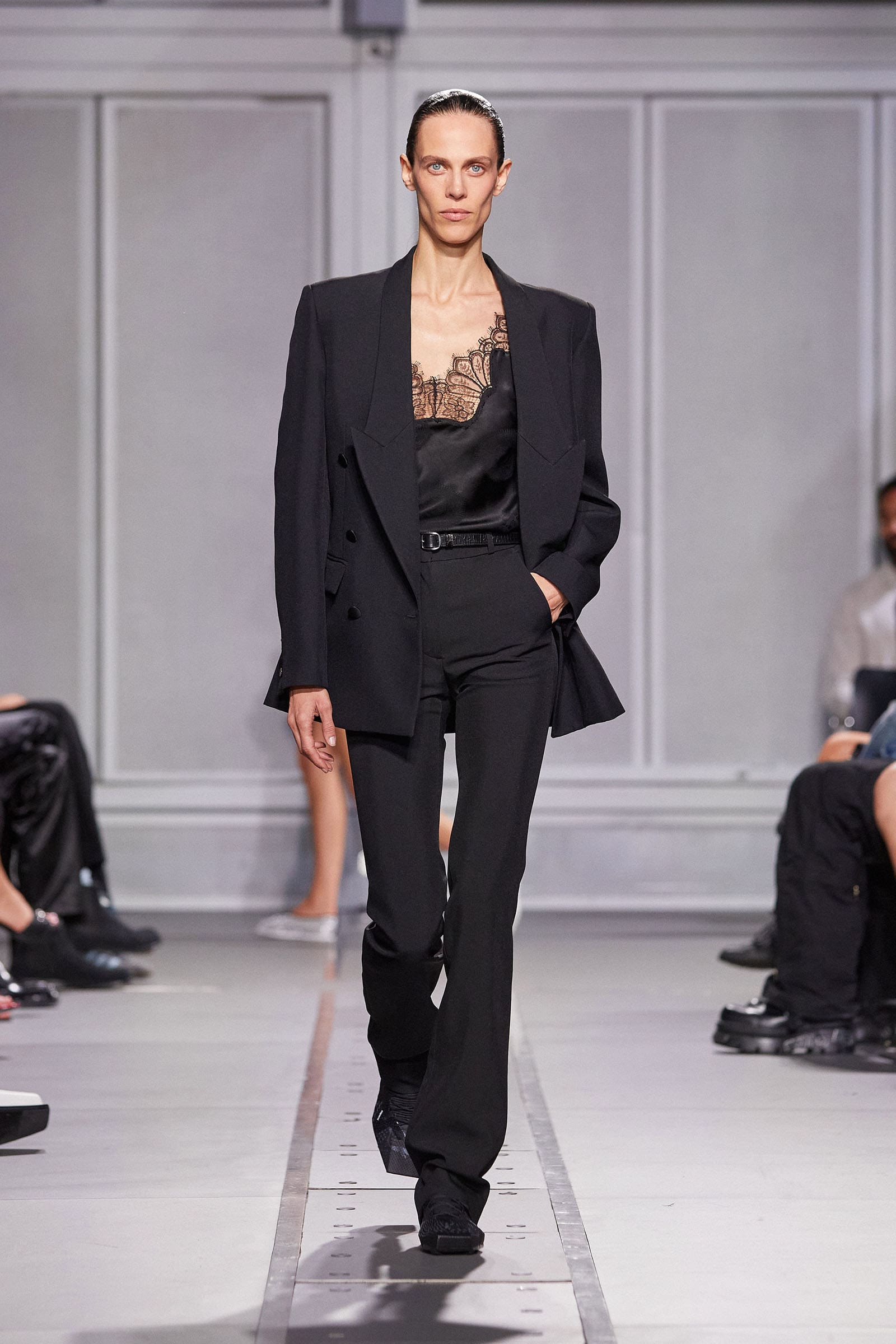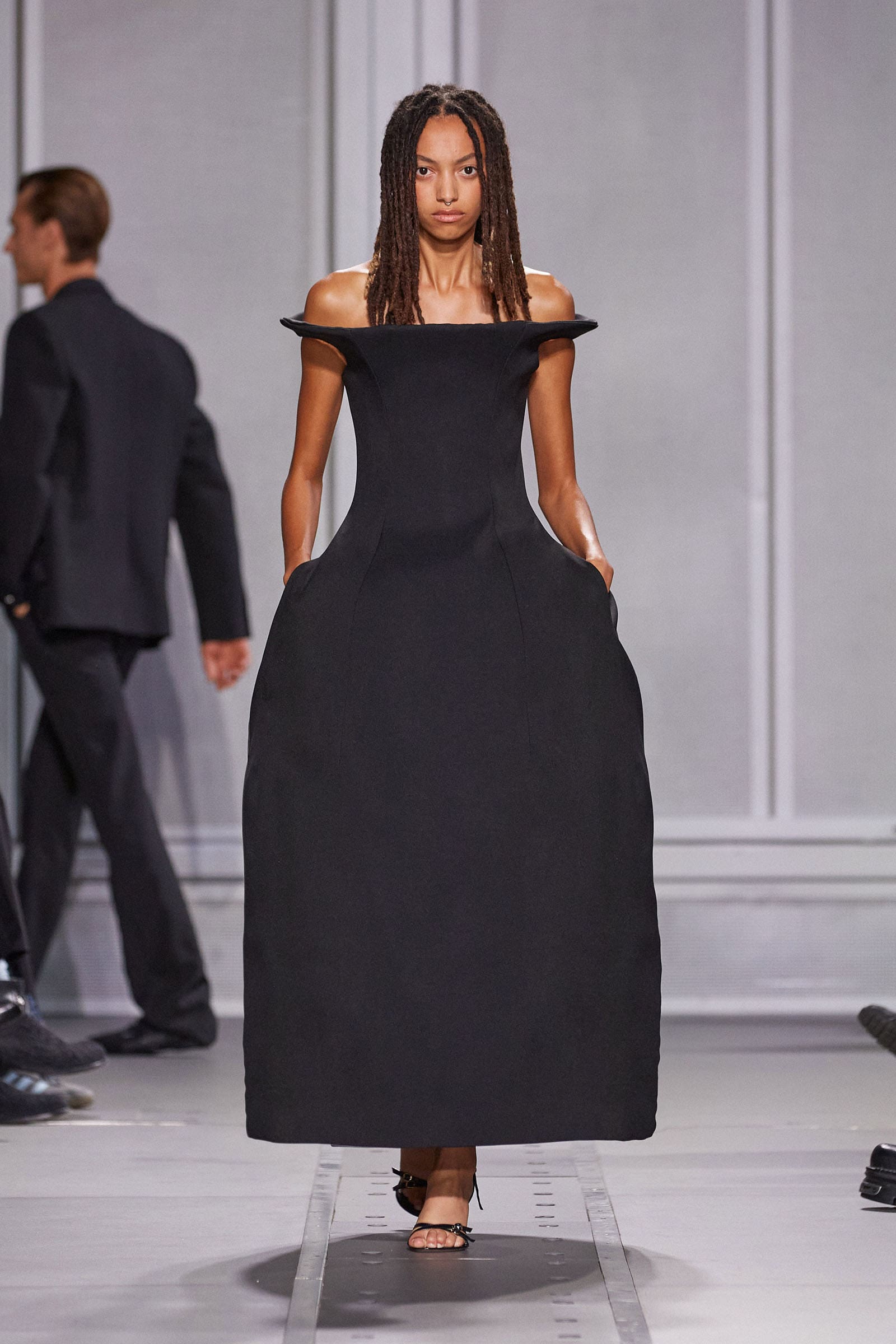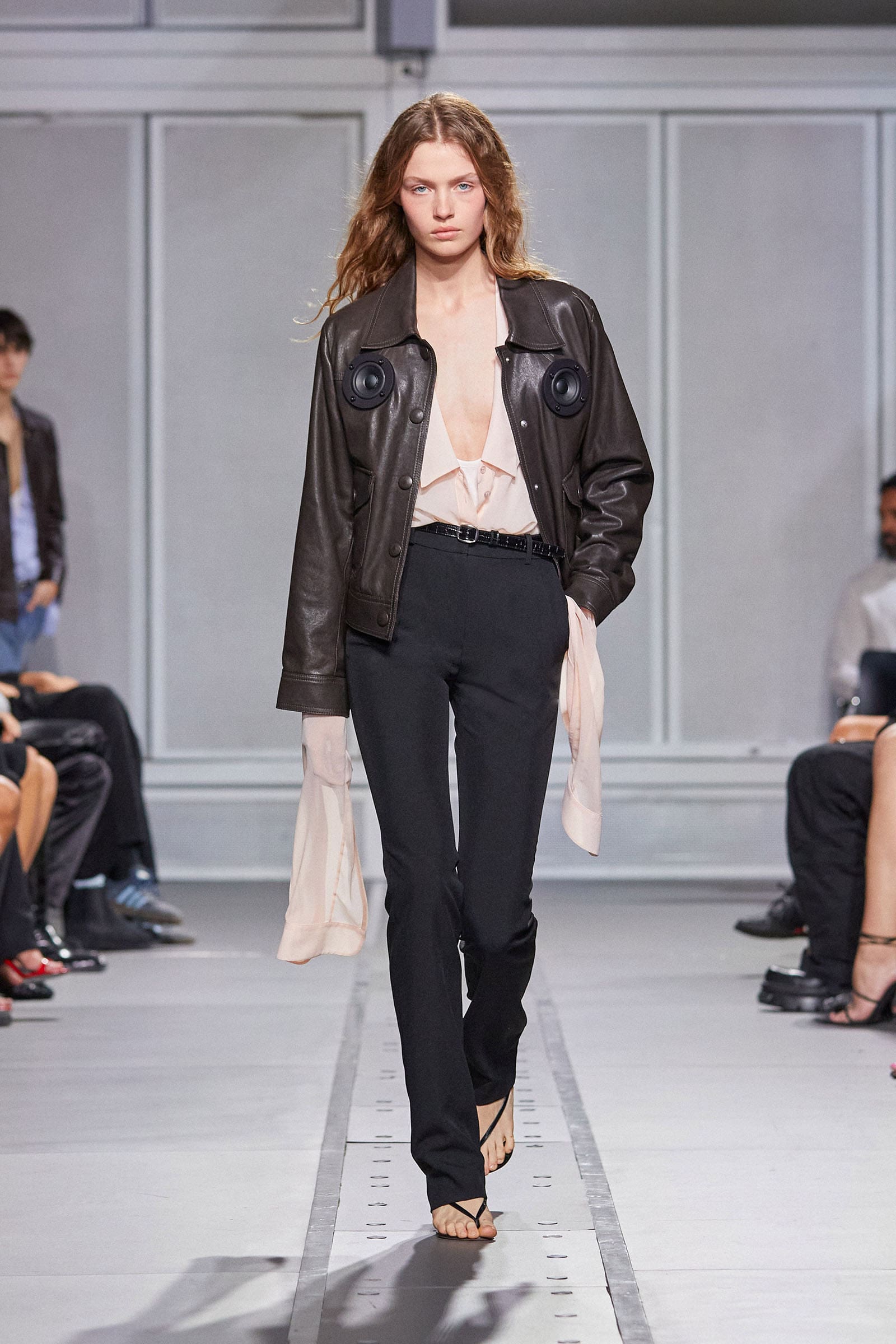
Sébastien Meyer and Arnaud Vaillant have become a big noise in fashion (two seasons ago, an unignorable cacophony) by cleverly blending the contemporary fascination for technology with highly contemporary and fun womenswear design. Tonight they took us on a journey into sound.
We were at IRCAM, a 1977-founded institute next to the Pompidou Center dedicated to sonic research. Downstairs in a high-roofed hall the show opened with a blast of abstract noise. Then the banks of insulated panels set into the ceiling and walls began to move, rotating to bounce the sound waves in different directions, affecting the manner in which they reached our ears. The audience raised its camera phones to shoot video.
This was the fanfare to herald a collection in which the designers’ ingenuity bounced against technology both new and old to muster clothes that echoed this most intangible of concepts. The newer tech came first, via flat speakers by Transparent, integrated into an opening leather jacket, a men’s sleeveless T-shirt, and other pieces. Many of the models wore small devices on their chest: these, tangentially to the main theme, were produced by a start-up named Humane and called AI Pins: apparently when released very soon they will “enable contextual and ambient computer interactions”. Another new but not sound-led development was the unveiling of a Coperni sneaker, “a collision of soccer boots and loafers” co-created with Puma.
Jacket lapels were in the peaked shape but notched far lower than usual. Knitwear sleeves hung way down below the wrist, or were sometimes knotted. Meyer said that this impression of stretching was in part because the sound of the fabric being wrenched had been incorporated into the soundtrack by u.r.trax (composed during a residency at IRCAM), and partly because they were looking to remix a new, silhouette-signaled impression of nonchalance. That soundtrack, albeit very abstractedly, also included the percussion of zippers: one sheer black dress featured meters of fine zipper ruffled across the neckline, similarly hemmed were capri pants in denim and jersey. A white lace-detailed dress was strewn with 3D printed “flowers” that were generated by cymatic production: through bouncing particles on a plate subject to sound vibrations. The symbolically resonant Coperni Swipe bag was reimagined as a Discman. A skirt in metallic herringbone was meant to mimic the casing of an old-school microphone.
The collection found its eye-catchiest tempo when contemplating older technologies. Vaillant asserted “the triangle is the smallest instrument and makes the loudest noise” in the orchestra: this was something a trombonist might dispute, however the insertion of triangles into the backs of jackets and the necks and waistlines of evening dresses was immediately arresting. Brass was represented by a trumpet-bodiced dress, and near to the close came a resoundingly volumed black dress that was a wearable cousin of Anish Kapoor’s sonic monument “Marsyas.” By the time the models had finished their closing walks, that soundtrack had fallen silent. But as the designers came out to bow, the crowd had mostly put their phones down: applause filled the room.
This article was originally published on Vogue Runway.
- 5 Things To Know About Sarah Burton’s Final Show For Alexander McQueen
- 5 Things To Know About Andreas Kronthaler For Vivienne Westwood’s Biographical SS24 Show
- Nadine Lustre Takes You To Paris Fashion Week With Vogue Philippines
- Vogue Philippines Editors Bea Valdes And Pam Quiñones At Paris Fashion Week

